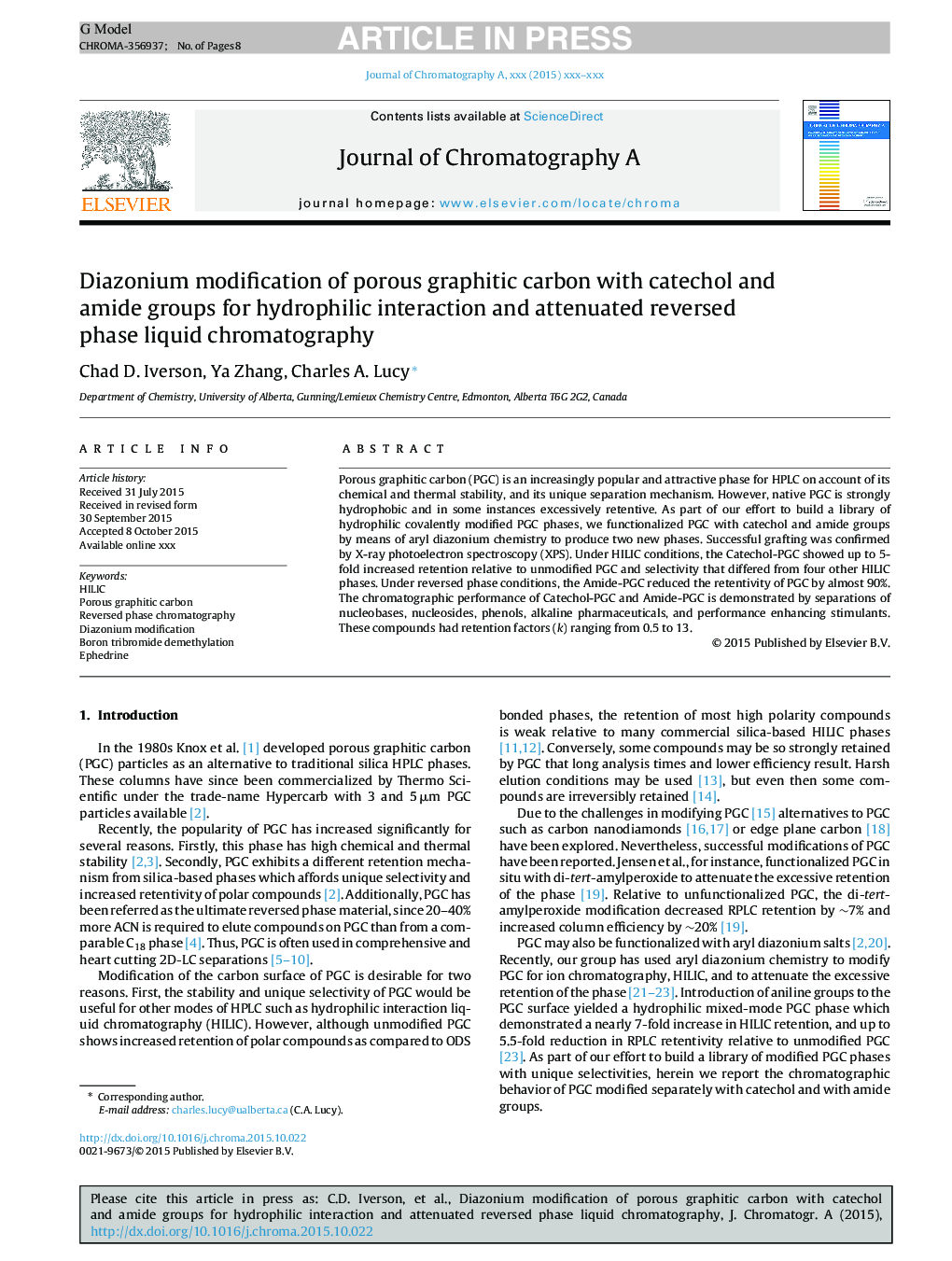| Article ID | Journal | Published Year | Pages | File Type |
|---|---|---|---|---|
| 7611066 | Journal of Chromatography A | 2015 | 8 Pages |
Abstract
Porous graphitic carbon (PGC) is an increasingly popular and attractive phase for HPLC on account of its chemical and thermal stability, and its unique separation mechanism. However, native PGC is strongly hydrophobic and in some instances excessively retentive. As part of our effort to build a library of hydrophilic covalently modified PGC phases, we functionalized PGC with catechol and amide groups by means of aryl diazonium chemistry to produce two new phases. Successful grafting was confirmed by X-ray photoelectron spectroscopy (XPS). Under HILIC conditions, the Catechol-PGC showed up to 5-fold increased retention relative to unmodified PGC and selectivity that differed from four other HILIC phases. Under reversed phase conditions, the Amide-PGC reduced the retentivity of PGC by almost 90%. The chromatographic performance of Catechol-PGC and Amide-PGC is demonstrated by separations of nucleobases, nucleosides, phenols, alkaline pharmaceuticals, and performance enhancing stimulants. These compounds had retention factors (k) ranging from 0.5 to 13.
Related Topics
Physical Sciences and Engineering
Chemistry
Analytical Chemistry
Authors
Chad D. Iverson, Ya Zhang, Charles A. Lucy,
